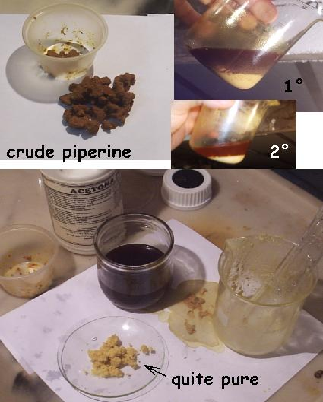The nature of vitiligo
Vitiligo is a skin disorder in which the skin exhibits white patches. The exact cause of this problem is unknown. The treatments currently used focus only on reducing the effect of vitiligo but not on curing it completely.
A recent research, however, has found that an active compound in black pepper called piperine helps in repigmenting the skin by stimulating it. Vitiligo is actually caused by a failure in the functioning of the pigment known as melanin. It is the pigment responsible for producing color on the skin. This disorder is more common in people who have dark skin, and is most prevalent in people who undergo prolonged exposure under the sun.
The main cause of vitiligo is the failure in the proper functioning of the melanocytes, but another factor in its incidence is the presence of other autoimmune diseases such as diabetes and heart disease.
The impact of vitiligo
Apart from the physiological effects of vitiligo, its psychological effects have been found to have greater impact on the patients. It is essentially a noncontagious condition, but this is not a widely known fact to the general population. Vitiligo suffers are often avoided in society, and they have become socially withdrawn because of this reaction from the public. This is why efforts in finding new solutions to this condition have not ceased.
Piperine as a viable treatment
Studies for vitiligo treatment have involved the use of herbal products and components of plants, one of which is piperine. Piperine is a compound found in black pepper. It is considered safer than other treatments and therapies like PUVA, UVB, and other surgical methods which may bring side effects.
Piperine is a type of compound which gives heat to the body. It is actually the substance that makes black pepper spicy. To test the activity of piperine, it was initially tested on animals. Animals were given piperine to eat, and after a few days, pigmentation was observed to have increased in the animals which were administered piperine. After this research, piperine was given to patients suffering from vitiligo, and significant changes have been noted in these patients as well. Because of this, piperine use for vitiligo had gained a following.
An even more powerful treatment method
It has been established that piperine will even be more effective if it is combined with the treatment of PUVA, which involves the exposure of the affected areas of the skin to ultraviolet radiation. Many researchers found that piperine is the best substance for repigmenting the skin when combined with PUVA therapy, resulting in a great reduction of white patches.
Additionally, only a small exposure of ultraviolet radiation would be required when the patient had already used piperine, effectively reducing the side effects that may come with UV therapy. With this combination, repigmentation has been observed to occur after only a short period. Research funded by the Vitiligo Society showed that after treatment with a piperine compound, it only took four UVR exposures for a noticeable repigmentation, while it took more than 10 UVR exposures for the same effect if piperine is not utilized.
Before using piperine, there should be a proper consultation with a doctor in order to determine whether you can use it or not. The doctor will examine your body condition thoroughly and will make the appropriate recommendation, depending on the findings.
How Effective Is Piperine For Vitiligo Treatment?,





















